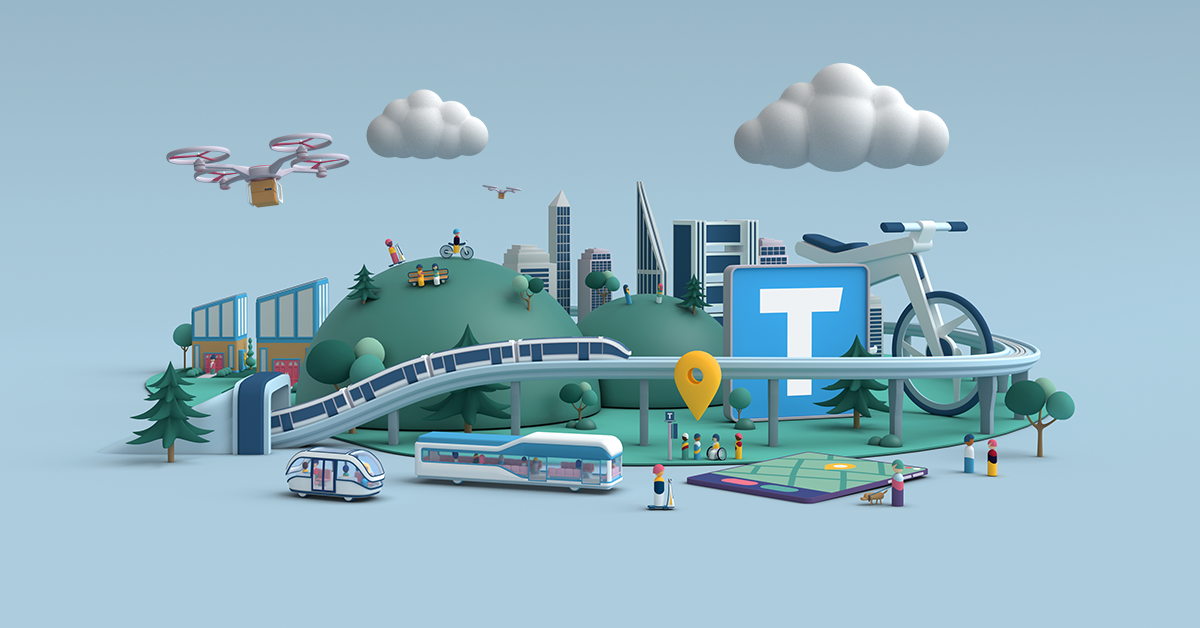What did we learn in Transport 2050 Phase 2? Read the report
What did we learn in Transport 2050 Phase 2? Read the report

To everyone who participated in Transport 2050 Phase 2 — either by completing a survey or attending an online event — thank you for sharing your voice!
This phase of engagement took place between April 19 and May 14, 2021. We asked people for input on draft goals and three actions that could transform how the region moves.
We’re sharing the “What We Heard” Summary Report so you can learn about what the region told us.
The draft goals
To guide the region’s transportation future, we proposed five goals to help get us to where we need to go. Your future transportation choices should be convenient, reliable, affordable, safe & comfortable, and carbon-free. Across the region – and backgrounds – the people of the region strongly supported these goals.
Action 1: People-first streets that invite walking, biking, and rolling
This action envisions a future where the streets are designed to make it easy to travel by foot, wheelchair, bike, scooter, and more. This action was strongly supported as people generally agreed with the aspiration of reducing the region’s dependence on automobiles. But we learned that careful attention needs to be paid towards how accessibility, goods movement, and parking is addressed in implementation.
Action 2: Fast and frequent rapid transit that’s a competitive choice for most longer trips
In Phase 2, we proposed two different approaches to greatly expanding rapid transit in the region. Network A relies more on service built above or below street level. Network B relies more on service running at street level. Both would get you where you need to go, quickly and reliably, but each approach comes with different trade-offs.
We learned that the region liked different things about the two networks and that both were supported. While more people supported Network B than Network A, the margins were slim, with younger people tending to support Network A and older people more likely to support Network B.
Action 3: Automated vehicles that provide convenient access to car trips, without adding to congestion
This action is all about leveraging automated vehicle (AV) technology to make car trips much more efficient – and accessible. People agreed with the vision for managing the introduction of automated vehicles, but with more people saying they were “neutral” compared to other actions.
People said they liked the safety and accessibility benefits of AVs, but they were also skeptical that they would work. They also thought that AVs could make existing issues in the region – like congestion or inequality – worse. The proposal to use fees to manage empty vehicles or pick-ups and drop-offs in congested zones saw less support than other measures in the engagement, however a majority agreed with the fees.
![]()
We are thankful for this input and acknowledge that we can do more work to do. We’ll be thinking about what we heard over the coming months as we work to a draft Transport 2050 strategy, with a comprehensive list of actions. Later this fall, we’ll share this draft with you for input. The final Regional Transportation Strategy is expected to be adopted early in 2022.






Being honest, every time I hear about automated car-sized vehicles I feel my eyes are going to detach from my head due to the massive eye roll that they experience. If you can put a vehicle in the road, make it a bus, means less engines, more people. Even if every AV is full they will never reach the capacity of a full bus. And when you try to sort out these density issues, you end up transforming the AV… into a bus!
Just leave it. AVs will enter the ecosystem on its own eventually, but don’t promote it as an alternative inside the transit system.